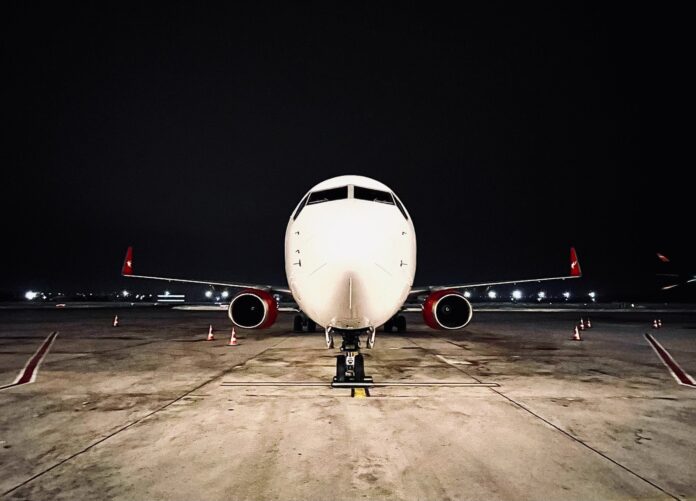What do the Walkman, cell phones, and rollerblades have in common? They were all invented in the same year as airline loyalty programmes – 1979.
In the 40+ years that have passed, we’ve seen some changes. Walkmans are all but gone, cell phones gave way to smart phones, and rollerblades are a nostalgic throwback. And yet airline loyalty programmes have remained relatively unchanged, until now. The pandemic gave the airlines the push needed to innovate and, in some cases, reinvent their airline loyalty programmes. The sector is brimming with activity, and airlines are competing for customer attention and retention.
It was not that long ago that airlines had to do little to attract customers to loyalty programmes. Perks were plentiful and downsides were few. That’s changed somewhat, especially in recent years. While the perks have remained attractive by most standards, customers have become more scrupulous and more intentional with their choices. Airlines have responded accordingly, revising their offerings and in some cases introducing new models.
“The business travel landscape has changed,” says Bonnie Smith, GM of FCM Travel South Africa. “Travel managers and frequent flyers are exploring their options. Many business travellers participate in several airline loyalty programmes at once, and airlines have been forced to think outside the box to encourage brand loyalty.”
The Rise of Subscription Models
Subscription models created a new revenue stream for airlines. Benefits, ranging from ‘fast track’ options that allow passengers to proceed more quickly through airport checkpoints, to priority boarding, and lounge access, offer passengers high perceived value at a low cost. For airlines it’s becoming a lucrative model: paid loyalty pays. To that end, some airlines have developed tiered subscriptions that offer better benefits and rewards to the higher levels. Emirates is a case in point, offering three levels of subscription through its Skywards+ programme; Classic at $399, Advanced at $699, and Premium at $999. In addition to each level’s increased perks, members also get additional airmiles, preferential rates, more lounge access, and better allowances.
Strategic Partnerships and Personalisation
Partnering with brands that are aligned or offer complementary services is a tried and trusted method to build loyalty, and airlines have long been wise to its value. It’s instrumental to increasing exposure and reach and adds considerable utility for members. The more streamlined these experiences become, the greater the benefit for members, which in turn leads to referrals and an increased chance of growing the customer base.
“In order for airlines to offer better services to loyalty members, they need to go deeper. They need to build stronger, deeper connections with members and that requires data sharing between partners,” says Smith. “More data creates better insights, and the result is a better product for the end-user.”
With so many touch points available between partners – bookings, email engagement, loyalty transactions, social media engagement – data abounds and opens up new opportunities for customer loyalty. This comes in the form of enhanced experiences, communication, offers and loyalty program engagement.
Conscious Considerations, Everyday Spend, and Gamification
Airlines have significant impact on the environment, although efforts are underway to curb that, there’s a long road ahead. As such, some airlines have begun adding ESG incentives to their rewards programmes, led by Etihad’s Corporate Conscious Choices. The first ever sustainability-focused corporate rewards programme, it aims to “recognise businesses and their employees for travelling more sustainably.” It accomplishes this through SAF investments and green surcharge fares, climate-smart travel, ESG initiatives, and raising partner profiles via public association.
The permeation of gamification into everything is undeniable, and loyalty programmes are the perfect vehicle for implementation. In fact, a recent study found that applying gamification to the loyalty marketing resulted in a 10x increase in engagement, conversion rate of over 80%, 8x increase in incremental revenue vs. non-gamified campaigns, and a 22% increase in average basket purchased.
Everyday earn and co-brand spending form another crucial part of contemporary loyalty programmes. According to a recent Harvard Business Review Study, more than 50% of airline miles are not earned directly through airlines or on flights. The most obvious of these come via co-branded credit cards, but ecommerce reward platforms are quickly gaining traction. They award customers for regular, everyday spend and offer different avenues to redeem points.
Some airlines are combining sustainability with gamification, enticing and engaging members with leaderboards and points accrual garnered from meeting green goals.
Travel Management Companies (TMCs) and Loyalty Programmes
The variety and abundance of loyalty schemes, both at an individual and corporate level, can be overwhelming.
About Corporate Traveller
Bonnie Smith, GM Corporate Traveller a division of the Flight Centre Travel Group, dedicated to saving businesses across Southern Africa time and money. Corporate Traveller has the benefit of being part of the world's third-largest travel retailer, leveraging its global negotiating strength. It has access to over 50 of the world's leading airlines and deals with more than 100 000 hotels around the world to guarantee savings for clients. Corporate Traveller provides clear, consolidated reporting of all its clients' travel activities, helping them to control travel spend and identify opportunities to save costs.


